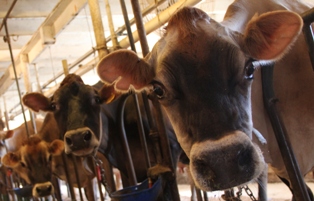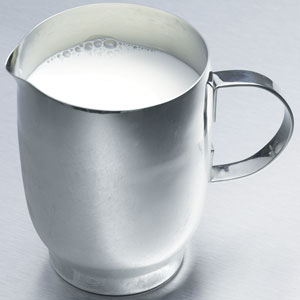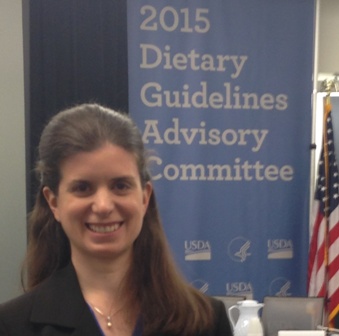It has been five years now since the dark days of early 2009, when the combined assault of collapsing milk prices and elevated feed costs produced a hemorrhage of red ink from America’s dairy farms. Collectively, dairy farmers lost $20 billion in net equity between 2007 and 2009, with most of that money disappearing in huge chunks during 2009, when gallon after gallon of milk left the farm at a severe loss. Five years later, the pain and memory lingers, even as balance sheets are recovering.
The problem for farmers in 2009 was that the public policy response was inadequate to the scope of the challenge – because our policy itself was lacking. In the intervening half-decade, NMPF worked within and across the dairy industry to devise an improved policy, to better reflect the realities of how milk is produced in America today, and by whom. We knew the new program would have to deal with the fact that federal budgets are limited, and the days of billion-dollar support programs, a la the 1980s, are not going to be repeated in the future.
After a year of deliberation, what emerged was a new risk management proposal to enable farmers to insure the margin between milk prices and feed costs. Without the limitations of the MILC program, much more of the nation’s milk supply could be covered by this voluntary program.
But NMPF also knew that to provide the most cost-effective insurance coverage for farmers, we needed to ensure that the program wouldn’t generate too much milk and send us into a downward spiral of low market prices and high insurance program costs. Thus was born the market stabilization element, which was designed to operate in low margin situations.
The power of that mechanism proved to be a real threat to processors, who railed against the program and disingenuously argued that our effort to prevent farm-level prices from flat-lining for month after month was equivalent to shorting the market enough to spike retail prices under normal conditions.
This debate was ultimately decided by one man: House Speaker John Boehner, who, in an ironic turn, likened the market stabilization element to a Soviet-style program, even as he strong-armed the farm bill conferees against taking a vote that he was afraid he would lose.
That brings us to the beginning of February, where those of us working on behalf of dairy farmers had to regroup and, using the tools at our disposal, re-craft the margin insurance program so that it can still provide an effective safety net while not encouraging excessive milk production and high taxpayer costs.
The package that has just passed the House and Senate should do just that. Adjustments that have been made in our original margin insurance program will make it affordable and effective, and should ensure that the margin protection safety net is just that – a safety net, and not a production stimulus.
The revised bill also will direct that, if farm-level margins again fall to 2009 levels, USDA will purchase consumer-ready (as opposed to bulk commodity) dairy foods for speedy donation to food banks. The federal budget cost of this program is likely to be higher than the program NMPF initially advocated. If that is the case, policymakers who proclaim the mantle of fiscal responsibility yet opposed our efforts to control program costs have no one to blame but themselves.
With the signature of President Obama, we reach the end of a long, tortured path leading to a new five-year farm bill. I believe the resulting dairy program will provide an effective and reasonable safety net, one that we have been striving to create these last many years. Whatever its shortcomings, it is far better than the programs it replaces.
2014 certainly appears, at this early stage, to be shaping up as a good year for milk producers. But the roller-coaster of pricing always cycles back down, eventually, necessitating a safety net for the bad times that follow the good. Creating such a safety net was the goal of NMPF five years ago, and while we haven’t gotten exactly what we hoped, the end result most certainly is badly needed, and will be helpful in the years ahead.
 In an effort to support future leaders of the dairy industry, NMPF is accepting applications for its 2014 scholarship program.
In an effort to support future leaders of the dairy industry, NMPF is accepting applications for its 2014 scholarship program.
 From Jim Mulhern, President and Chief Executive Officer, NMPF:
From Jim Mulhern, President and Chief Executive Officer, NMPF: ANNAPOLIS, MD – At a hearing here today before the Maryland House’s Health and Government Operations Committee, the National Milk Producers Federation (NMPF) urged the state’s delegates to oppose a bill that would legalize the sale of unpasteurized milk in Maryland through the use of cow-share programs.
ANNAPOLIS, MD – At a hearing here today before the Maryland House’s Health and Government Operations Committee, the National Milk Producers Federation (NMPF) urged the state’s delegates to oppose a bill that would legalize the sale of unpasteurized milk in Maryland through the use of cow-share programs. ARLINGTON, VA – The National Milk Producers Federation (NMPF) today
ARLINGTON, VA – The National Milk Producers Federation (NMPF) today  Congress is still wrangling over the contents of a new farm bill proposal, and the timing of final passage of the legislation is likely to slip later into January as NMPF and other supporters of the
Congress is still wrangling over the contents of a new farm bill proposal, and the timing of final passage of the legislation is likely to slip later into January as NMPF and other supporters of the 




